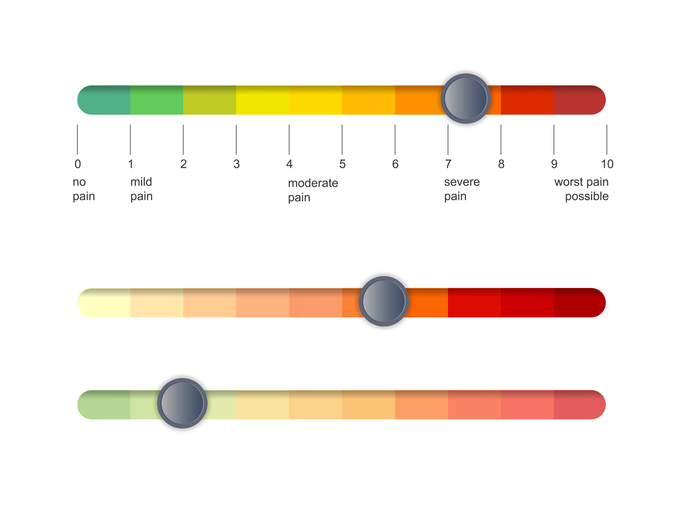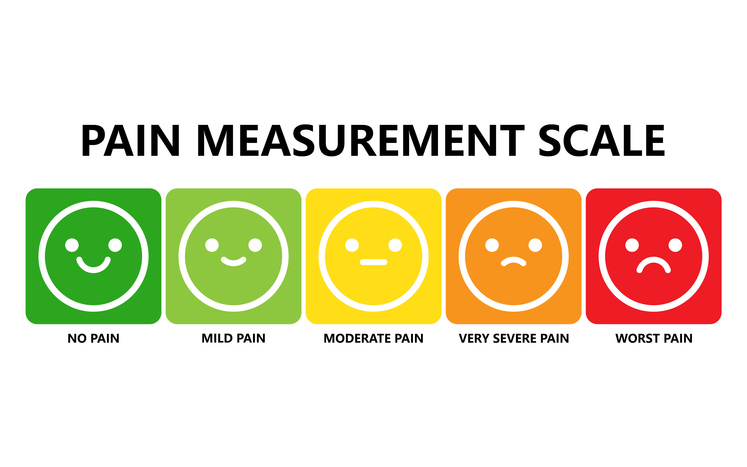Pain
Numeric Rating Scale (NRS)

The numeric rating scale is one of the most commonly used pain scales in medicine. The NRS consists of a numeric version of the visual analog scale. The most common form of the NRS is a horizontal line with an eleven point numeric range. It is labeled from zero to ten, with zero being an example of someone with no pain and ten being the worst pain possible. This type of scale can be administered verbally. It can also be administered via paper to be completed physically.
The Pros and Cons of the Numeric Rating Scale
Pros
- It takes less than a minute to complete.
- It takes less than a minute to administer and score.
- The numeric scale allows it to be used internationally without translation difficulties.
- It has been deemed valid and reliable for rating pain intensity.
- It can be administered verbally and in writing, making it accessible for more people.
Cons
- It only evaluates one aspect of pain - intensity.
- It does not factor in past pain experiences.
- It does not factor in fluctuations in pain.
- It only evaluates pain experienced in the last 24 hours or "an average pain intensity".
The numeric rating scale is a scale designed to help assess the extent of an individual's pain and improve communication regarding pain with health care providers. This scale can help guide the diagnostic process, track the progression of the pain, and more. Many hospitals use the NRS on whiteboards in hospital rooms daily to measure pain levels.


















